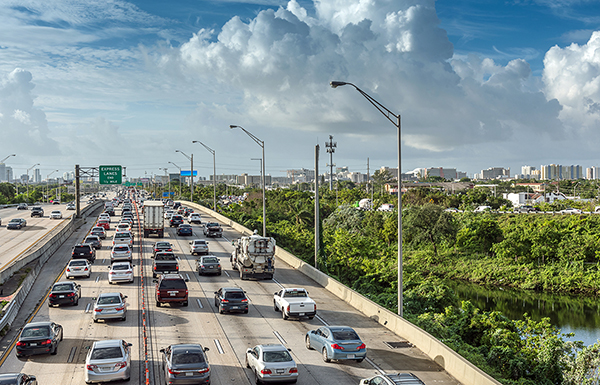
Young children who live close to a major roadway are twice as likely to score lower on tests of communications skills, compared to those who live farther away from a major roadway, according to an analysis by researchers at the National Institutes of Health and the University of California, Merced. Moreover, children born to women exposed during pregnancy to higher-than-normal levels of traffic-related pollutants—ultra-fine airborne particles and ozone—had a small but significantly higher likelihood of developmental delays during infancy and early childhood. The study appears in Environmental Research.
“Our results suggest that it may be prudent to minimize exposure to air pollution during pregnancy, infancy, and early childhood—all key periods for brain development,” said Pauline Mendola, Ph.D., an investigator in the Division of Intramural Population Health Research at NIH’s Eunice Kennedy Shriver National Institute of Child Health and Human Development (NICHD) and the study’s senior author.
Previous studies have linked exposure to common air pollutants in pregnancy to low birthweight, preterm birth and stillbirth. A few studies have found a higher risk of autism and of lower cognitive functioning in children living near freeways, but results of studies about how prenatal and early childhood exposure to air pollution might affect development have been inconsistent.
Given that a large proportion of the U.S. population lives close to major roadways, which are major sources of air pollution, the researchers sought to determine if living near heavily traveled roads was linked to lower scores on developmental screens—questionnaires or checklists that indicate whether a child is developing normally or needs to be referred to a specialist for further testing.
The researchers analyzed data from the Upstate KIDS Study. They matched the addresses of 5,825 study participants to a roadway data set, calculating the distance of each address to the nearest major roadway. For each participant, they matched home address, mother’s work address during pregnancy, and address of the child’s day care location to an Environmental Protection Agency data set for estimating air pollution levels. From 8 months to 36 months of age, the children were screened every 4 to 6 months with the Ages and Stages Questionnaire, a validated screening measure evaluating five domains of child development: fine motor skills, large motor skills, communication, personal social functioning and problem-solving ability.
Compared to children living more than half a mile from a major roadway, children living from roughly 164 feet to .3 miles from a major roadway were twice as likely to have failed at least one screen of the communications domain.
The researchers also estimated exposures to ozone and fine inhalable particles (PM2.5), two pollutants produced by car traffic. Fine inhalable particles are 30 times smaller than the width of a human hair, can pass through the lungs’ defenses, and are absorbed directly into the bloodstream.
Prenatal exposure to elevated PM2.5 led to a 1.6 to 2.7 percent higher risk of failing any developmental domain, while higher ozone exposure led to a .7 to 1.7 percent higher risk of failing a developmental domain. In contrast, higher postnatal exposure to ozone was linked to a 3.3 percent higher risk of failing most domains of the developmental screen at 8 months, a 17.7 percent higher risk of overall screening failure at 24 months, and a 7.6 percent higher risk of overall screening failure at 30 months.
These results led the researchers to conclude that early childhood exposure to air pollutants may convey a higher risk for developmental delays, compared to similar exposures in the womb. The study is associational and so cannot prove cause and effect. The authors noted that larger studies are necessary to confirm these links.
“It is not clear why exposure to pollutants after birth is linked to a higher risk of developmental delay,” said Sandie Ha, Ph.D., of the Department of Public Health at the University of California, Merced, and lead author of the study. “However, unlike exposure during pregnancy, exposure during childhood is more direct and does not go through a pregnant woman’s defenses.”
Reference
Ha, S, et al. Prenatal and early life exposure to ambient air pollution and development. Environmental Research. 2019.
###
About the Eunice Kennedy Shriver National Institute of Child Health and Human Development (NICHD): NICHD conducts and supports research in the United States and throughout the world on fetal, infant and child development; maternal, child and family health; reproductive biology and population issues; and medical rehabilitation. For more information, visit http://www.nichd.nih.gov.
About the National Institutes of Health (NIH): NIH, the nation's medical research agency, includes 27 Institutes and Centers and is a component of the U.S. Department of Health and Human Services. NIH is the primary federal agency conducting and supporting basic, clinical, and translational medical research, and is investigating the causes, treatments, and cures for both common and rare diseases. For more information about NIH and its programs, visit http://www.nih.gov

 BACK TO TOP
BACK TO TOP